Heat detectors are often used where smoke detectors are not available. Simply put, a heat detector is a device used to detect any significant increase in temperature that could signal an impending fire. So what is a heat detector? How to install a standard heat detector? If installing smoke detectors is the ideal solution, why are heat detectors still installed to detect fires? Follow the article below of Company P69 to find the answer!
What is a heat detector?
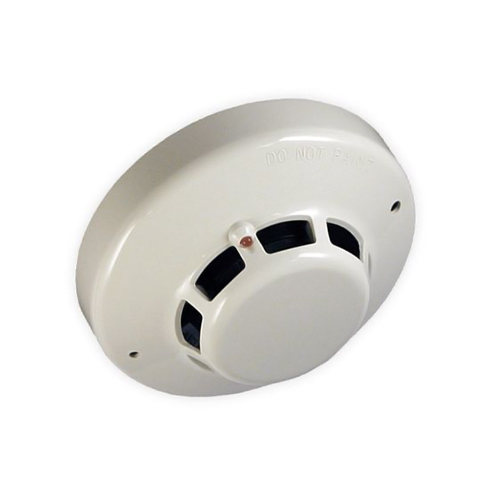
Heat detectors This is an input fire alarm device that is responsible for transmitting a fire alarm signal to the fire alarm center when a fire incident occurs.
The heat detector works by sensing an increase in the ambient temperature. When a fire occurs, the heat will radiate and disperse to the surrounding space, through which the heat detector will detect this abnormal increase in heat and send a fire alarm signal to the fire alarm center. handle.
Working principle of heat detector
The heat detector operates on the temperature sensor. That is, when the temperature of the environment where the device is installed increases and reaches a specified level, corresponding to the threshold specified for the heat detector during production, (depending on the standards of each market that the detector is used for). Fixed thermostat will have different temperature thresholds such as: 60, 70, 80 degrees) will make the contact inside alarm and send a signal to the fire alarm center.
Heat detector standard features
– Features a slim, compact, good-looking design coupled with a high degree of reliability.
– The detector’s mechanism of action allows the detector to be suitable for installation in areas where, when there is a fire, the temperature will rise suddenly.
– The operating mechanism allows the detector to be an optimal cost-saving option. The heat detector does not consume current in the standby state.
– Fits Hochiki NS soleplates.
– Operating voltage 15-30VDC.
– Expansion chamber temperature rise sensor.
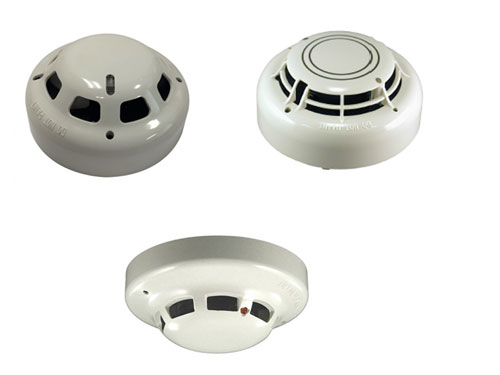
Heat detector installation location
The location of the heat detector is very important for the protection of your home. Although installing the heat detector in the center of the room is best, you can still place it on the wall, about 50cm or more below the ceiling height.
Heat detectors are often used where smoke detectors are not suitable, for example: in rooms with a lot of smoke and dust such as garages or attics. You should also use heat detectors where chemicals or flammable substances are stored.
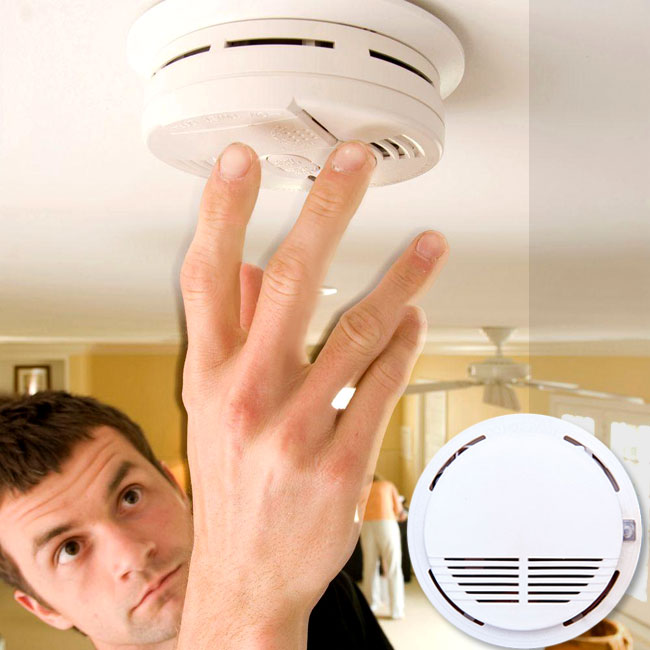
Place the heat detector as close to the center of the room as possible to cover the entire area
neighboring c is covered. Alternatively, choose a location that is at least 10cm away from a wall or corner.
Instructions for installing heat detectors according to technical standards
Once we understand the basics, the next thing is to learn how to properly and safely install.
Step 1. Prepare all necessary items:
First, you need to have useful tools to help you. The list of required tools includes:
- Hammer
- Hand Drill/Screwdriver
- pliers
- Mini electrical box (remodeling box)
- A ladder or a chair high enough for easy standing
- Measuring wire, ruler (if any)
- Pencil
- Old rags or towels (to wipe the dust, clean up after work)
- And the most important component, the fire alarm (and the primary battery if included in the package when purchased)
Step 2. Install the base and plug to the ceiling (for battery-powered models):
The battery-powered device will not need to drill holes in the wall or electrically connect to the wall/ceiling. Some boxes will come with instructions, but for the purposes of this article, the first thing you need to do is mark the location and install the base case of the machine first.
Normally, the base box and the fire detector will not be connected. So you just need to attach the kit to the base case afterwards and screw it in the right direction. Finally, you will install the existing plug or nail set into the available hole positions.
Use a hammer or drill/screwdriver and hammer/screw in slowly and tight enough.
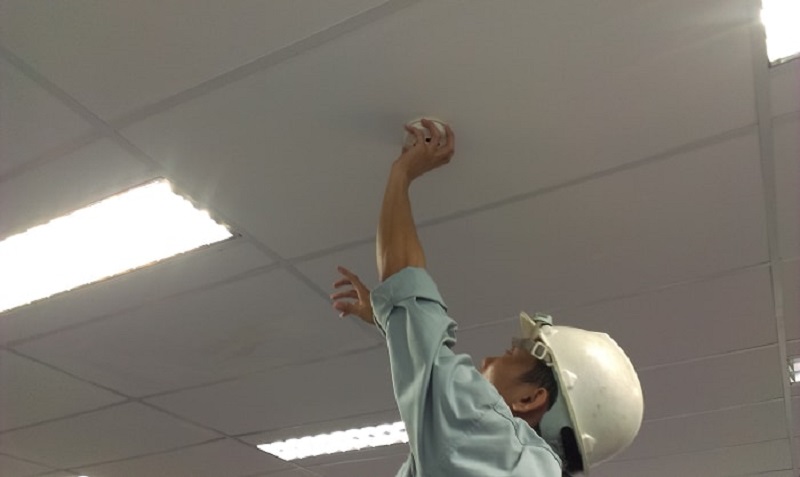
Step 3. Install a wired heat detector
To install and wire this type of fire alarm, you need to drill a hole just enough in the ceiling. You should use measuring tape, pen, ruler for this step to do it properly.
Note: Remember to turn off the circuit breaker before doing so to avoid electric shock
Next, you will need a specialized item called a remodeling box, or mini electrical box to put the wires in. Please choose a wire long enough to go to your electrical cabinet in the next step. Use pliers to cut off the excess in the available wire to connect back to the fire alarm. Remember to leave a little extra wire off the ceiling. Once completed, work on fitting the box to the base will follow.
Install extra batteries in case the fire alarm is still usable in the designated position on the box
Step 4. Go to the electrical cabinet
Next is the connection of the “project” to the electrical cabinet so that we can activate the energy for the fire alarm. Connect the wires and circuit breakers to the appropriate positions.
Step 5. Check the device (applies to all sets)
After everything is done, don’t forget to test the devices you just installed. Our work will not be complete without trying it and this is a step that many consumers often forget.
To check if the thermostat is working:
– Open the circuit breaker for testing ( for wired fire alarms ) and press the TEST button on the device. At this time, there will be an alarm coming from the machine.
For battery powered machines , you just need to press TEST:
– If your machine is not beeping, turn off the circuit breaker and recheck the connected wires to see any errors that may have been missed. In the event that the wires have been properly connected but the machine does not turn on, it is highly likely that you need to contact the equipment supplier/manufacturer or the seller of the fire alarm to have the product replaced. new.
Notes when installing heat detectors
There are at least 3 parameters of interest when installing heat detectors: distance of detectors and temperature thresholds, and working conditions of the installation environment (Temperature, humidity, …)
Heat detector installation distance depends on height, as specified in NFPA 72 – 2016
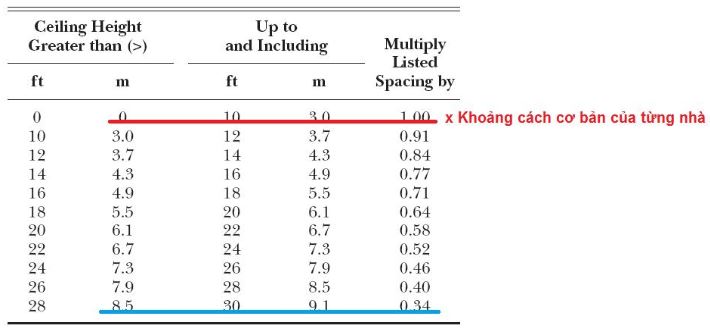
1. How to read the lookup table
It is important to understand the basic distance supported by the manufacturer at a height of 3m, normally 7m (This parameter varies by manufacturer)
If the detector is mounted at a height of 0-3.0m, the distance is 1 x 7m = 7 m
If the detector is mounted at a height of 8.5m-9.1m, the distance is 0.34 x 7m = 2.38 m
2. The layout of the detector on the ground
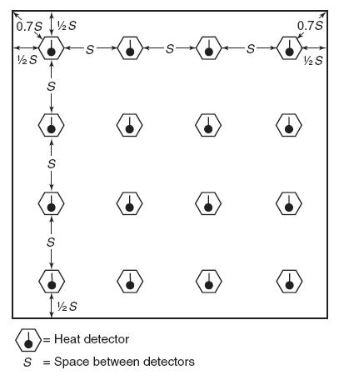
3. How to install the detector on flat and slanted ceilings
When choosing a heat detector to be installed in an area, the designer needs to consider the operating temperature of the environment. Depending on the installation environment, the temperature class is selected accordingly.
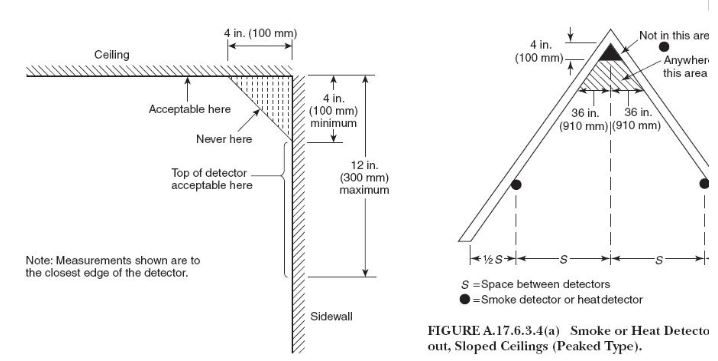
4. Temperature classes according to EN54-5
Selected heat detector for 1 temperature class in the range A1, A2, B, C, D, E, F, G
The heat detector is integrated with 1 temperature group A1, A2, B, user can choose via DIP Switch or through programming from the alarm cabinet.
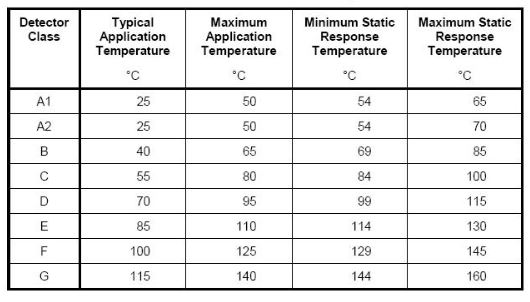
Compare smoke detectors and heat detectors?
If installing smoke detectors is the ideal solution, why are heat detectors still installed to detect fires?
Heat detectors can be a reliable and virtually hassle-free solution. In some cases, heat detectors are chosen because of their low cost and immunity to contaminants and environmental extremes. In other cases, Heat Detectors are used to activate automatic fire sprinklers or other types of fire suppression systems.
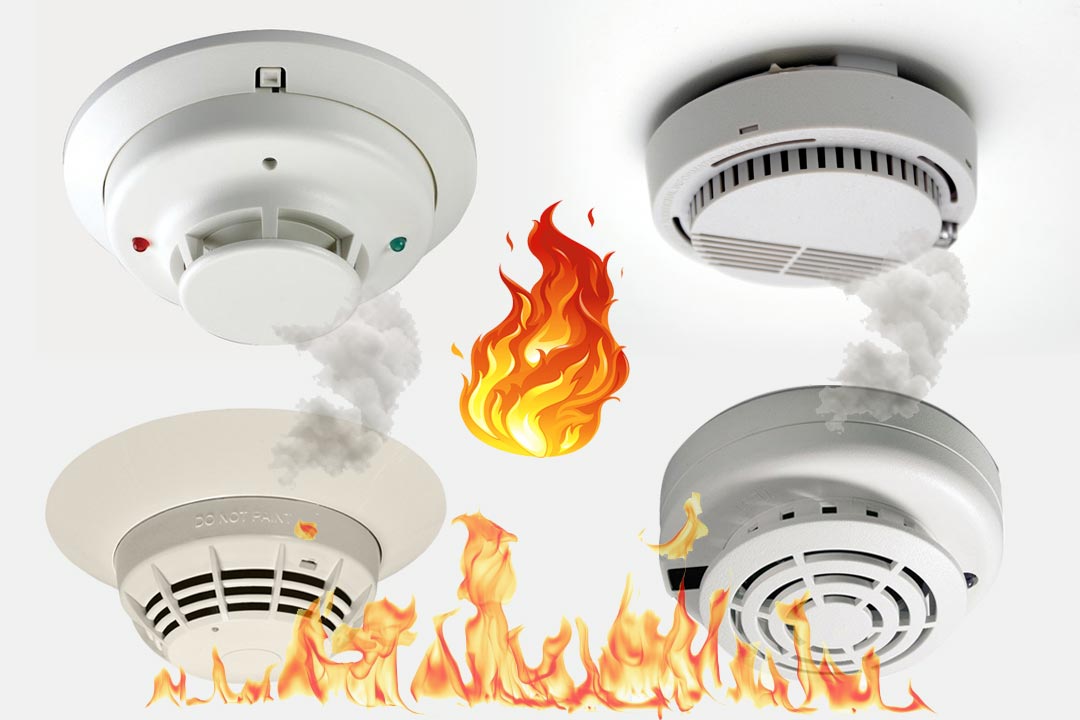
The current combination of smoke and heat detectors is designed to be unaffected by water vapor, small insects, airborne dust and a wider temperature range. While solutions are generally much more expensive than Heat Detectors, they have very early warning capabilities. In addition to giving building occupants more time to react, early warning helps people promptly handle fires before serious property damage occurs. Our application guides can help you determine if a Combined Thermal Smoke Detector is the right solution for your application.
Why combine heat detectors with smoke detectors?
Since heat and smoke detectors work in different ways – each detects heat and smoke respectively – it’s better to use a combination of the two to ensure your home is fully protected.
Contact us today for a free consultation and answer at:
Contact information P69 – M&E . M&E Contractor
Address: No. 6/165C Xuan Thuy, Cau Giay District, Hanoi
Website: https://p69.com.vn/
Hotline: 02437688156 – 0965937799
Email: kd@cokhip69.com.vn
Facebook: https://www.facebook.com/p69nhathaucodien
LinkedIn: https://www.linkedin.com/in/congtyp69/
Youtube : https://www.youtube.com/channel/UCOUwCnE5iGj8iqe_ZIUM7oA

